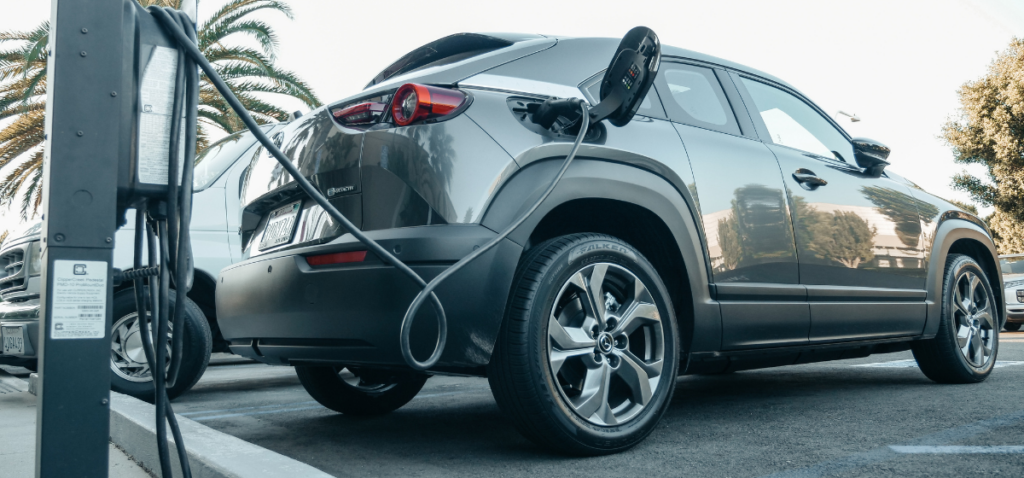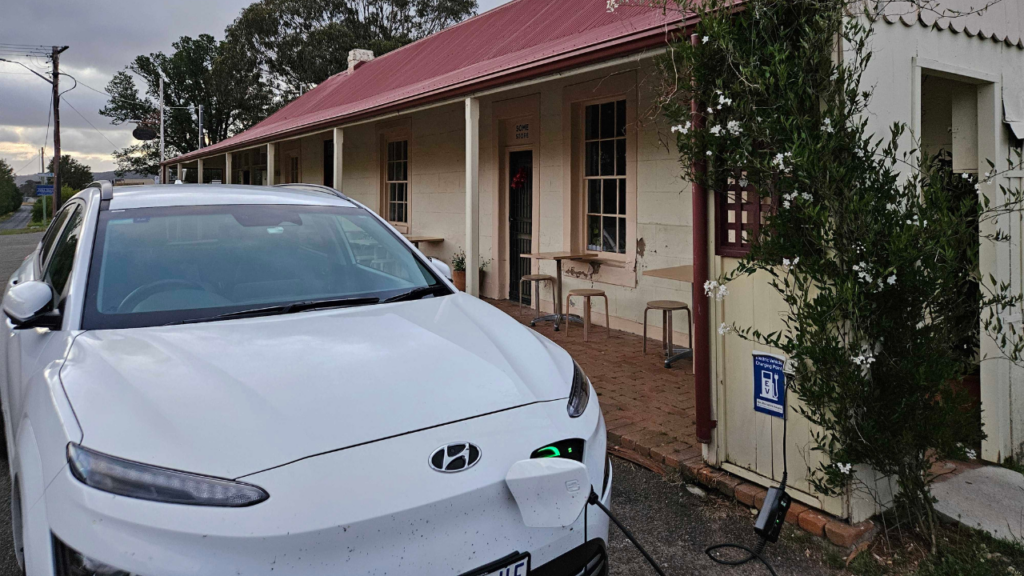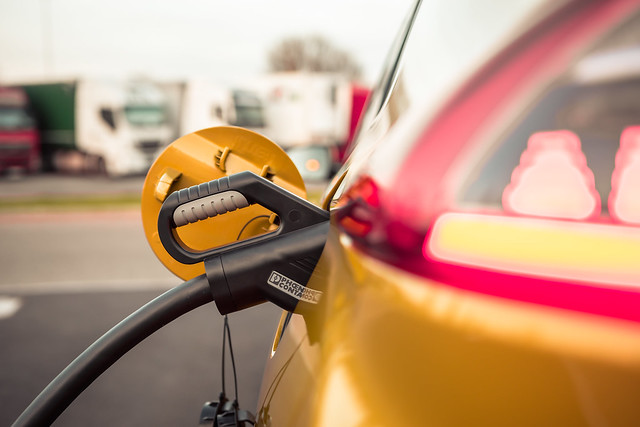May 17 2024 update:
Australia’s New Vehicle Efficiency Standard passed Federal Parliament on 16 May 2024, and will commence on 1 January 2025. This is a huge win for our climate, our health and our hip pockets, and something the Climate Council campaigned hard for.
Find out below how the policy will work, and all the benefits Aussies will experience because of it – no matter how they choose to get around.
Australians are paying too much for fuel. We’re also driving vehicles that guzzle more fuel and spew out all sorts of harmful pollutants into the air. This is because we don’t have national standards that make manufacturers send us their most efficient cars.
With over 85% of the international car market covered by fuel efficiency standards, Australia is missing out on the cleanest, cheapest to run cars.
Emissions from other sectors in Australia have started a welcome and necessary decline, yet those from transport are still rising. To cut our petrol bills, clean up our air and protect all Australians from escalating climate change, we need to rapidly slash transport emissions.
Enter… fuel efficiency standards. Here’s a crash course in the top 10 things you should know about this great tool for tackling transport emissions and cutting Aussie fuel bills.
1. Fuel efficiency standards will save drivers money
Australians are battling huge cost of living pressures, with high and volatile prices at the petrol pump among the key culprits. Introducing a strong fuel efficiency standard will slash fuel costs for Aussie drivers. That’s because more efficient new cars use less fuel, so it will cost less to fill up at the pump. Drivers who make the switch to a zero emissions vehicle will see even bigger savings, cutting out petrol bills altogether as well as having lower maintenance costs.
A well-designed fuel efficiency standard could save consumers up to $10,000 over a vehicle’s lifetime, and deliver up to $13.6 billion in total benefits for Australians by 2035.
The average new car will consume less fuel to drive the same distance, lowering fuel bills and helping Australians tackle cost of living pressures.
The money saved will create more economic opportunities in our local communities by reducing the amount of money flowing offshore to fossil fuel giants. Fuel efficiency standards will help keep more money here at home in Australia, supporting the community and local businesses.
2. Fuel efficiency standards will give Aussie drivers more choice in new cars
There is strong demand for new low and zero emission vehicles in Australia, but a lack of supply means that waiting lists of 12 months or more are common at the moment. Australians also have far fewer choices for low and zero emission vehicles at an affordable price, compared with drivers overseas. The European Union currently has over 200 models of electric vehicles available, whereas Australia has just over 50.
Fuel efficiency standards can help boost the range and affordability of low and zero emissions vehicles in Australia, by providing a strong incentive for manufacturers to send their cheapest and cleanest new cars here. With a fuel efficiency standard in place, EVs are expected to reach price parity with petrol cars in Australia within the next few years.
Find out how hybrids compare with battery electric vehicles here
3. Fuel efficiency standards will cap pollution from new cars
Fuel efficiency standards aim to limit the greenhouse gas emissions Australia’s fleet of cars release. They do this by creating a maximum annual average level of carbon emissions across a manufacturer’s overall new car sales. Over time, the maximum amount of carbon dioxide (CO₂) that can be emitted is reduced, meaning car makers must offer more low and zero emissions new vehicles to avoid penalties. Over time, the cap keeps shrinking until all new vehicles sold must be zero emissions.
Strong fuel efficiency standards already cover over 85 percent of the international car market, including in a range of markets similar to Australia’s, like the United States, United Kingdom and New Zealand. This is a tried and tested way of driving down pollution from new cars, to clean up our fleet over time as Aussies buy a new ride. Analysis commissioned for the Climate Council shows strong fuel efficiency standards could avoid 31 million tonnes of harmful transport pollution in Australia over the years to 2035.
4. Fuel efficiency standards will clean up our air for better health
Australia is one of a few wealthy countries alongside Russia which does not have fuel efficiency standards capping how much CO₂ our new cars can produce. Because of this, we have become a dumping ground for polluting petrol and diesel cars that are much dirtier and more expensive to run than those commonly sold in other markets. This is harming our health, as well as our hip pockets.
Research from the University of Melbourne has found that air pollution from cars, trucks and fossil-fuel powered buses may cause over 11,100 deaths every year and result in over 12,000 cardiovascular hospitalisations, over 6,800 respiratory hospitalisations and 66,000 asthma cases annually in Australia. A strong fuel efficiency standard can help slash transport emissions – including both planet-warming CO₂ and other pollutants like nitrogen oxides (NOx); particulate matter (PM2.5 & PM10) – tiny particles ranging in size from 2.5 to 10 micrometres that can penetrate into the lungs and bloodstream causing a range of health problems; and carbon monoxide (CO). Fewer emissions from our cars means fewer pollutants released into the air and better health for all Australians.
5. Fuel efficiency standards are already in place in lots of markets just like ours
Fuel efficiency standards are a common and popular tool used around the world to cut transport pollution and improve the efficiency of new cars. The United States has had fuel efficiency standards since the 1970s, progressively tightening them over time. Drivers there have access to a wide range of vehicles, including choices which are popular in Australia like utes and four wheel drives. In recent years, the US has become a leading developer of electric utes and other heavy duty vehicles.
The United Kingdom and New Zealand also have fuel efficiency standards which are set to steeply slash emissions. Both of these countries are right-hand drive markets just like Australia. This means manufacturers are already producing and selling plenty of lower and zero emission vehicles in other markets like ours.
6. The Federal Government is working on a fuel efficiency standard for Australia right now
As part of the National Electric Vehicle Strategy announced in April 2023, the Federal Government has promised to design and deliver Australia’s own fuel efficiency standards. This is a welcome and well-overdue step to start cleaning up our fleet. Find out more about the Government’s recent announcement on preferred settings for its New Vehicle Efficiency Standard that’s in the works here.
But designing any old standards won’t do. For Australians to see these big benefits, our home-grown fuel efficiency standard needs to be strong and well-designed. We can learn from the best examples around the world and expert advice on cutting transport emissions to make sure this delivers real savings for drivers and genuine cuts to emissions. What does that look like? Read on…

7. We need all new cars to be zero emissions by 2035 at the latest
Every new vehicle sold today will likely remain in the fleet for more than a decade. That is why the International Energy Agency has said we need to see 100 per cent of new cars sold be zero emissions by 2035 at the latest, in order to reach the global net zero by 2050 goals in the following years.
In Australia, this means setting a fuel efficiency standard on a trajectory that can rapidly reduce new vehicle emissions year-on-year, so that all new cars can be zero emissions as soon as possible. At the moment, the average new light passenger car sold in Australia produces 146.5 grams of CO₂ per kilometre (g CO₂/km), while it is even higher for large SUVs and light commercial vehicles at an average of 212.5g CO₂/km. We have a long way to go to reach zero emissions with our new vehicle fleet, so we need to aim high and go fast now in setting strong fuel efficiency standards.
Climate Council notes that a science-aligned emissions reduction target would see Australia reach net zero by 2035, significantly earlier than 2050. For this reason, 2035 should be considered the latest date for an effective emissions reduction trajectory in our fuel efficiency standard.
8. Aligning with other major markets will see Australia move up the queue for cleaner and cheaper vehicles
Australia is currently at the back of the queue when it comes to accessing the cleanest and cheapest new cars. To move up the queue for the best new cars, we need fuel efficiency standards which are at least equivalent to other major markets, like New Zealand, the United States and the United Kingdom. Car manufacturers have to supply plenty of lower and zero emission vehicles to these car markets to meet fuel efficiency standards and avoid penalties. But currently in Australia, there is no incentive for them to do so because we don’t have the same standards.
A weak standard which lags behind other countries is just as bad as having no standard at all, because Australians will not see the benefits of cleaner cars that are cheaper to run. To realise these benefits, Australia’s fuel efficiency standard needs to be competitive with the other major markets manufacturers are already sending their best cars to.
9. Excess credits provide loopholes for manufacturers that can water down the benefits
With fuel efficiency standards, car manufacturers can earn and sell credits if their fleet emissions are below the cap. Manufacturers who have emissions over the cap must buy these credits to lower their own fleet average. Earning and trading credits is an important part of how fuel efficiency standards work.
But in some countries, vehicle manufacturers are allowed to count low and zero emission vehicles more than once when calculating their fleet emissions (also known as “super credits” or “multiplier credits”). This means they can meet the caps while still selling a lot of high polluting vehicles. Some schemes also give out additional credits for technologies that manufacturers claim cut emissions beyond the tailpipe, like measures to reduce air conditioning use and improve engine cooling (also known as “off-cycle credits”).
These kinds of free credits are effectively loopholes for manufacturers – letting them claim to be cutting emissions while continuing to sell dirty cars which are expensive to run. Including them in the design of an Australian fuel efficiency standard would significantly reduce both the cost and emissions savings achieved – slashing the benefits for all of us.
10. Every day we wait to put a fuel efficiency standard in place, Aussies are missing out on the benefits
Australians are currently doing it tough in the face of rising costs of living – including high prices at the petrol pump. Every day we wait to introduce a strong standard in Australia means drivers will continue to miss out on cleaner cars that are cheaper to run.
Australians have already paid a high price for our governments dragging their feet. If fuel efficiency standards had been introduced in 2016 (when this was last on the agenda), Aussie drivers would have saved $5.9 billion in fuel costs. We would also have avoided 9 million tonnes of CO₂ – similar to a year’s worth of emissions from domestic aviation.
The Federal Government should put the pedal to the metal and get fuel efficiency standards started in 2024, so that more Australians can start sharing the benefits as soon as possible.
Want to know more?
The Climate Council has developed recommendations for fuel efficiency standards that would get Australia off the starter’s grid and into the race for the world’s cleanest and best cars. Read our policy brief or dig into our technical submission to the Federal Government’s design process. Find out how hybrids compare with battery electric vehicles here.








